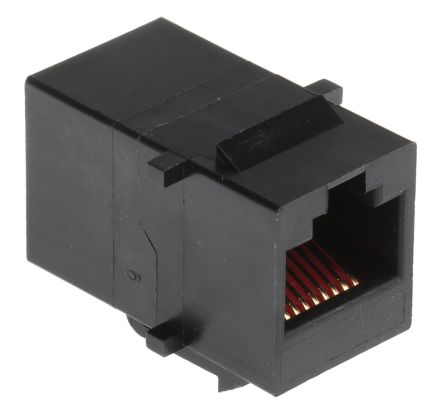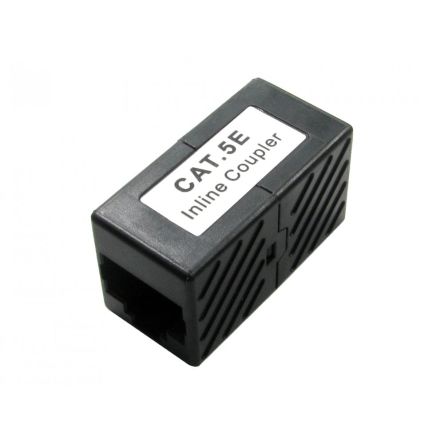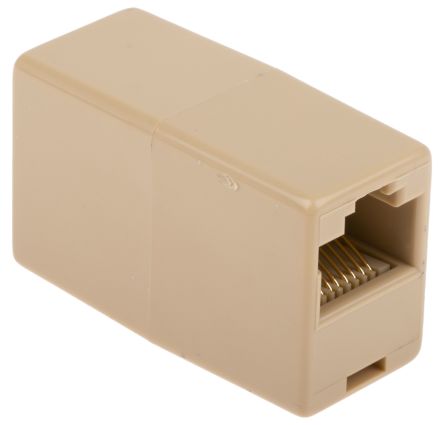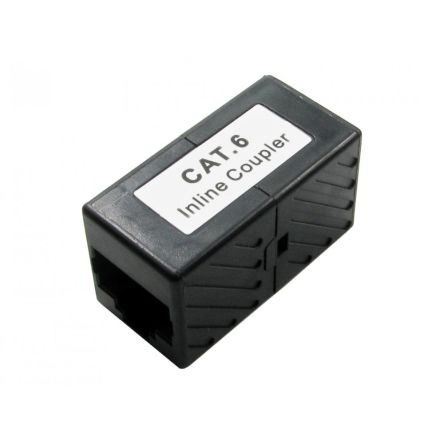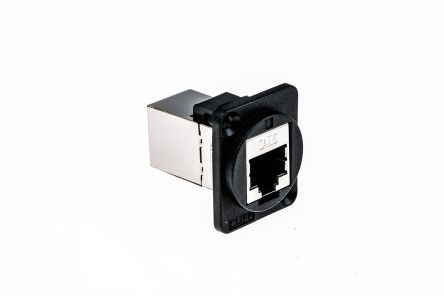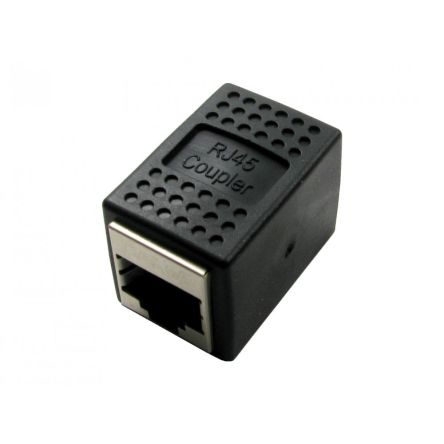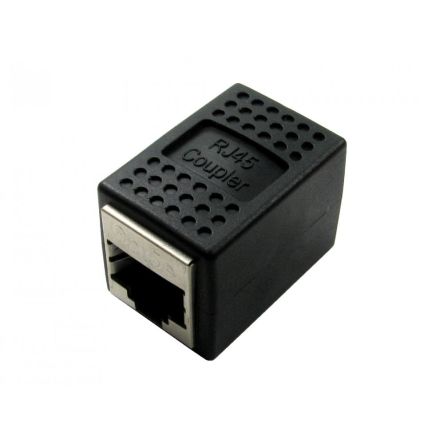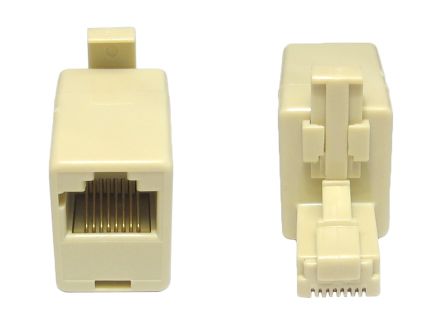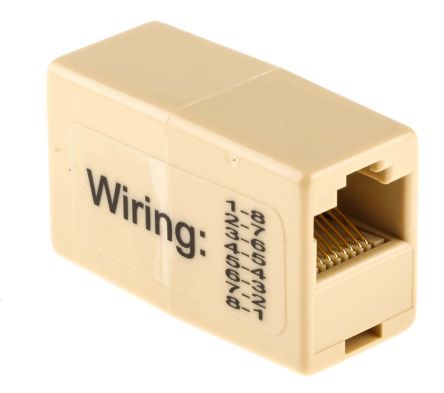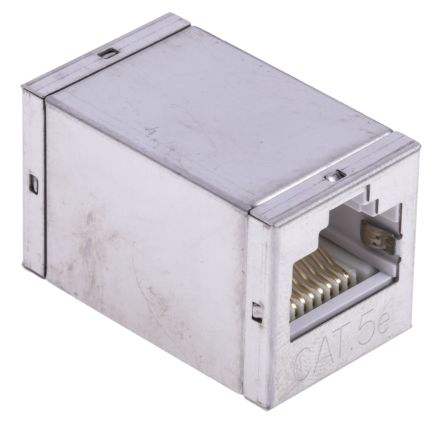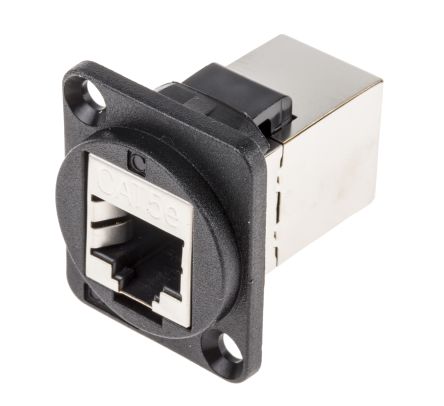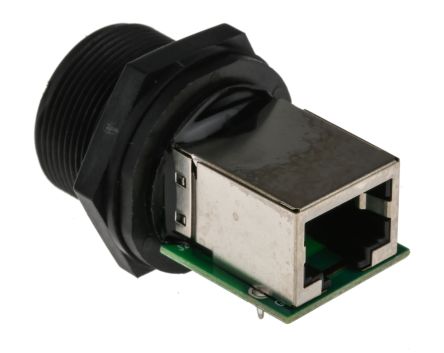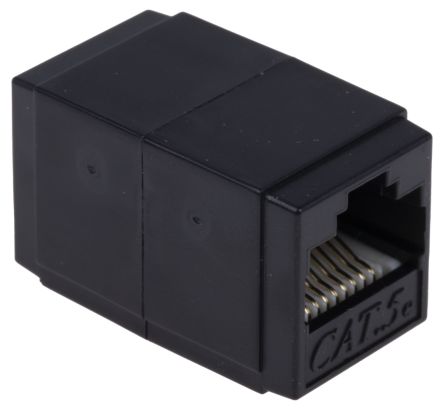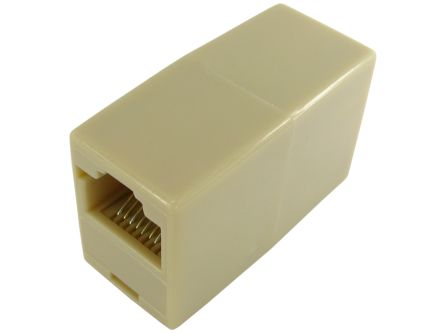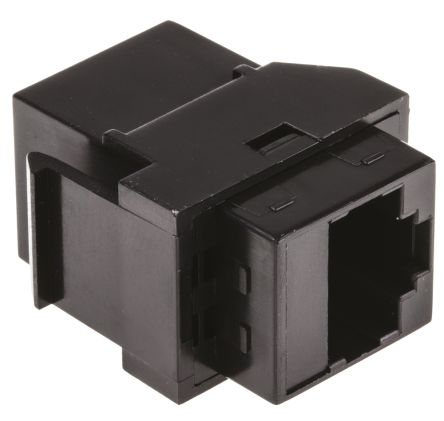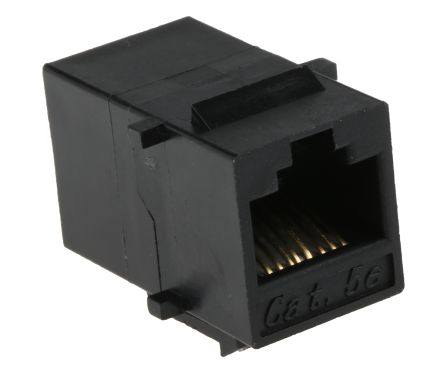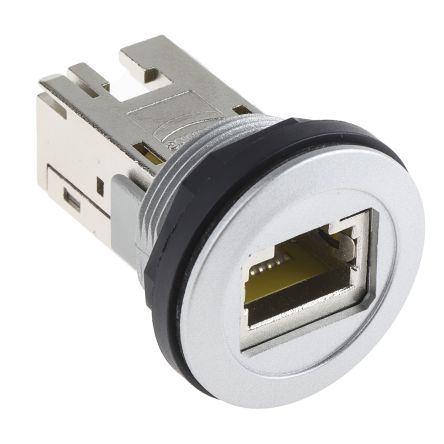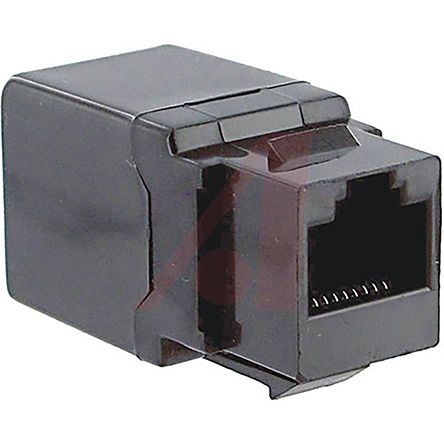- Automation & Control Gear
- Cables & Wires
- Enclosures & Server Racks
- Fuses & Circuit Breakers
- HVAC, Fans & Thermal Management
- Lighting
- Relays & Signal Conditioning
- Switches
- Batteries & Chargers
- Connectors
- Displays & Optoelectronics
- ESD Control, Cleanroom & PCB Prototyping
- Passive Components
- Power Supplies & Transformers
- Raspberry Pi, Arduino, ROCK, STEM Education & Development Tools
- Semiconductors
Rj45 Couplers
Ethernet couplers are devices used to connect Ethernet cable connections from one type to another. There can be various reasons to use a coupler such as to extend network cabling, split a signal allowing for two cables to be connected to a single port or to allow for different fiber optic network cables to be connected.
Types of LAN (Local Area Network) Access
As Ethernet couplers are essential for connecting devices within a Local Area Network (LAN), it's important to understand the different types of LANs so you can choose the appropriate cable coupler connectors for your specific needs:
- Star Topology: This is the most common LAN topology, where all devices are connected to a central hub or switch. This central point acts as a traffic controller, directing data packets between devices.
- Bus Topology: All devices are connected to a single cable, known as the bus. Data travels along the bus, and each device checks if the data is intended for it.
- Ring Topology: Devices are connected in a circular chain, and data travels in one direction around the ring. Each device receives the data and passes it along to the next device in the ring.
- Mesh Topology: Devices are interconnected with multiple paths, creating a redundant network with high fault tolerance. If one connection fails, data can be rerouted through other paths.
- Tree Topology: A tree topology combines characteristics of star and bus topologies. It consists of a hierarchical structure with multiple levels of hubs or network switches connected in a tree-like fashion.
Types of Couplers
Ethernet couplers mainly differ in how many ports they have, ranging from one to six ports. They can also differ in wiring configuration, depending on what inputs you need to convert between. Couplers can also be found in both shielded or unshielded forms, with both featuring a standardised snap-in system to ensure that a reliable connection is made and kept.
While couplers can be used with almost any cable type including Cat5, Cat5e, Cat6a, and Cat7, always check both connectors when buying a coupler to ensure you can make the exact connections you need and in the correct orientation when using a coupler to split a line.
Coupler
The term "coupler" is a general term encompassing various types of connectors used to join cables or components. In the context of networking, it often refers to Ethernet couplers or RJ45 couplers.
Ethernet Coupler
An Ethernet coupler is specifically designed for connecting Ethernet cables, typically using RJ45 connectors. They are essential for extending network connections or joining cables with different connector types.
Keystone Coupler
Keystone couplers are designed to fit into keystone wall plates or patch panels, offering a modular and customisable solution for network installations. They allow for easy swapping and upgrading of network connections.
Modular Coupler
Modular couplers are a broader category of couplers that include keystone couplers and other types of connectors designed for modularity and flexibility.
Inline Coupler
Inline couplers, also known as RJ45 inline couplers, are designed to connect two Ethernet cables in a straight line, extending the cable length.
Interface Types
- RJ45 Coupler: RJ45 couplers are the most common type of Ethernet coupler, featuring RJ45 connectors on both ends. They are used to connect two Ethernet cables with RJ45 connectors.
- RJ45 Female: An RJ45 female connector is a socket-type connector that accepts an RJ45 male plug. Most Ethernet couplers have female connectors on both ends.
- RJ45 Male: An RJ45 male connector is a plug-type connector that inserts into an RJ45 female socket. Ethernet cable couplers typically have male connectors.
- RJ Plug/Socket: RJ (Registered Jack) is a standardised telecommunications network interface. RJ45 is the most common type used for Ethernet connections.
Shield Types
- Shielded Coupler: Shielded couplers have a metallic shield to reduce electromagnetic interference (EMI) and crosstalk, ensuring signal integrity in noisy environments.
- Unshielded Coupler: Unshielded couplers do not have a metallic shield and are suitable for environments with minimal EMI.
- UTP Coupler: A UTP coupler is designed for unshielded twisted-pair (UTP) Ethernet cables, which are commonly used in home and office networks.
- STP Coupler: An STP coupler is designed for shielded twisted-pair (STP) Ethernet cables, which offer better protection against EMI.
- FTP Coupler: An FTP coupler is designed for foiled twisted-pair (FTP) Ethernet cables, which have an overall foil shield for EMI protection.
How Does an Ethernet Coupler Work?
Ethernet couplers work by extending the electrical connections between two Ethernet cables. In the case of inline couplers, they typically have two female RJ45 sockets that align the eight cores of wire (four twisted pairs) within the cables to meet seamlessly in the middle.
Ethernet splitters work under a similar principle to inline couplers but split the signal from one cable to multiple cables. This is done through having two or more female sockets on a single side of the coupler with a single connector B that is often a male plug. This single male plug enters the couplers housing and is then fed across all of the female sockets.
Industry Applications for Ethernet Couplers
Ethernet couplers are used in various industries in Singapore:
**Networking and Telecommunications: **Extending network cable runs in offices, data centers, and telecommunications infrastructure.
Industrial Automation: Connecting sensors, actuators, and control systems in industrial environments.
Building Automation: Extending Ethernet connections for building management systems and security systems.
Home Networking: Connecting Ethernet cables to extend Wi-Fi coverage or connect devices directly to the network.
Buy Ethernet Couplers from a Trusted Supplier in Singapore
RS is a trusted supplier, distributor, and manufacturer of Ethernet couplers in Singapore, delivering units from reputable brands such as CONEC, Harting, and our in-house RS PRO line. Other networking equipment we carry include coaxial Ethernet cables and coaxial adapters which can support a wide variety of connections.
Order Ethernet couples online from RS to enjoy fast delivery across Singapore, with next-day delivery and self-collection options available. For more details on ordering, delivery, and fees, please refer to our Ordering Page and Delivery Page.
